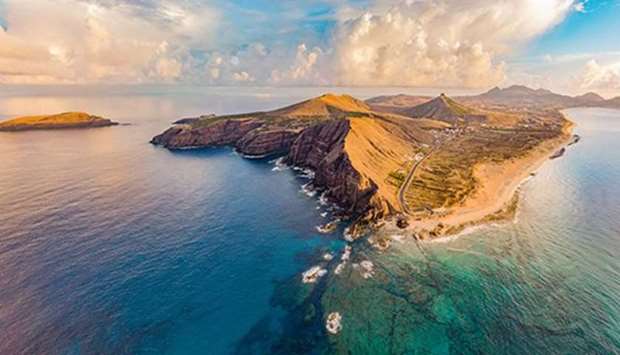UNESCO's Man and the Biosphere (MAB) programme added 25 new sites, one of them transboundary, in 18 countries to the World Network of Biosphere Reserves, which now numbers 714 biosphere reserves in 129 countries around the globe.
The International Co-ordinating Council of UNESCO's Man and the Biosphere Programme (MAB-ICC) meeting online, held from 27 to 28 October, approved these additions along with the extension or re-zoning of five existing biosphere reserves, which in most cases also led to a change in their official names.
UNESCO Director-General Audrey Azoulay said that the time for transformation is now. ‘ Crises also create opportunity, the opportunity to change how we see our relationships with nature, with each other and with the Earth,’ she said, adding ‘we know that there is no future for business as usual. We need a new normal for biodiversity.’
Andorra, Cabo Verde, Comoros, Luxemburg and Trinidad and Tobago join the MAB Network this year with the designation of their first sites: Ordino Biosphere Reserve, Fogo and Maio Biosphere Reserves, Mwali Biosphere Reserve, Minett Biosphere Reserve and North-East Tobago Biosphere Reserve respectively.
UNESCO biosphere reserves seek to reconcile human activity with the conservation and sustainable use of biodiversity. They are a central element of UNESCO's research and awareness-raising work to foster innovative sustainable development practices and combat the loss of biodiversity by supporting communities and Member States' understanding, valuing and safeguard the living environment.
Sites designated this year:
Ordino Biosphere Reserve (Andorra)
Complex W-Arly-Pendjari (WAP) Biosphere Reserve (Benin, Burkina-Faso, Niger)
Oueme Lower Valley Biosphere Reserve (Benin)
Fogo Biosphere Reserve (Cabo Verde)
Maio Biosphere Reserve (Cabo Verde)
Mwali Biosphere Reserve (Comoros)
Asterousia Mountain Range Biosphere Reserve (Greece)
Panna Biosphere Reserve (India)
Bunaken Tangkoko Minahasa Biosphere Reserve (Indonesia)
Karimunjawa-Jepara-Muria Biosphere Reserve (Indonesia)
Merapi Merbabu Menoreh Biosphere Reserve (Indonesia)
Almaty Biosphere Reserve (Kazakhstan)
West Altai Biosphere Reserve (Kazakhstan)
Minett Biosphere Reserve (Luxembourg)
Addu Atoll Biosphere Reserve (Maldives)
Fuvahmulah Biosphere Reserve (Maldives)
Toson-Khulstai Biosphere Reserve (Mongolia)
Hadejia Nguru Bade Biosphere Reserve (Nigeria)
Oban Biosphere Reserve (Nigeria)
Okangwo Biosphere Reserve (Nigeria)
Bosques de Neblina – Selva Central Biosphere Reserve (Peru)
Island of Porto Santo Biosphere Reserve (Portugal)
Kologrivsky Forest Biosphere Reserve (Russian Federation)
Gishwati Mukura Landscape Biosphere Reserve (Rwanda)
North-East Tobago Biosphere Reserve (Trinidad and Tobago)

